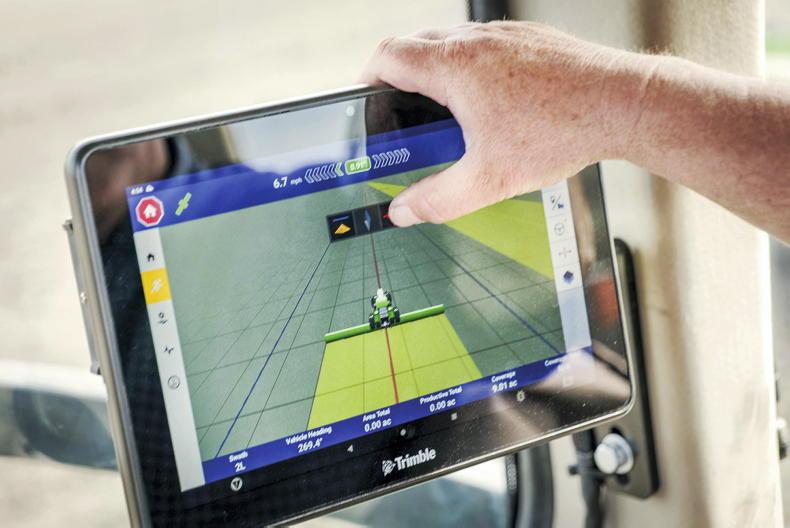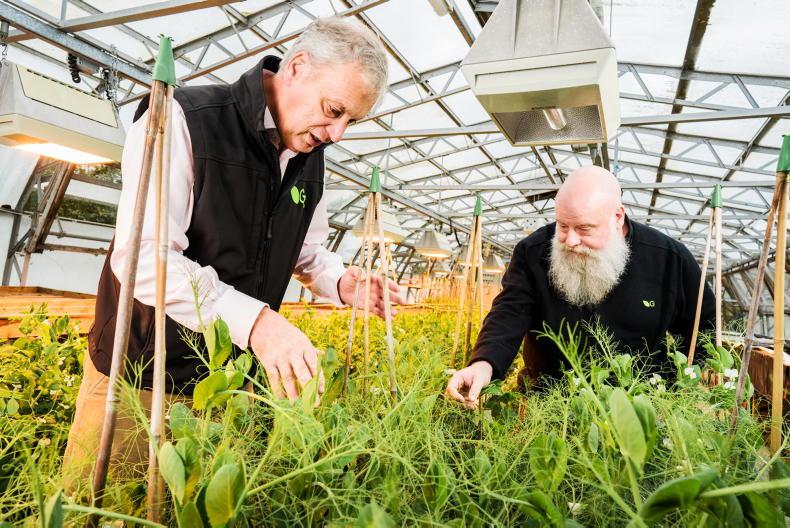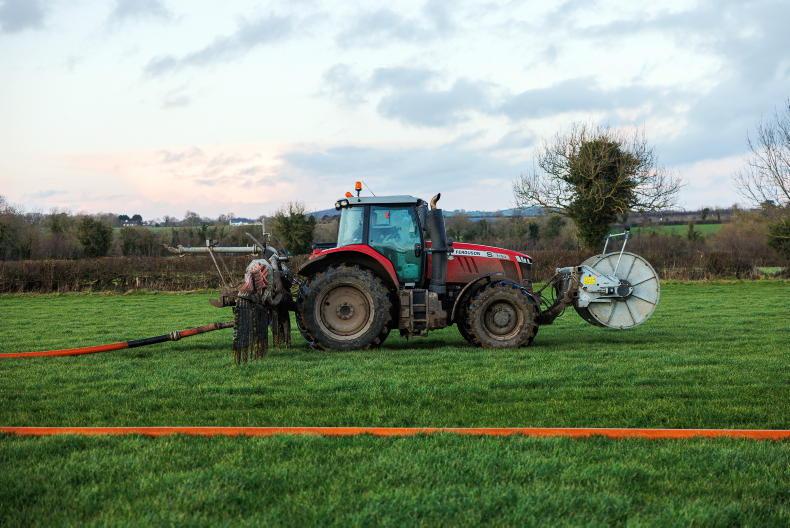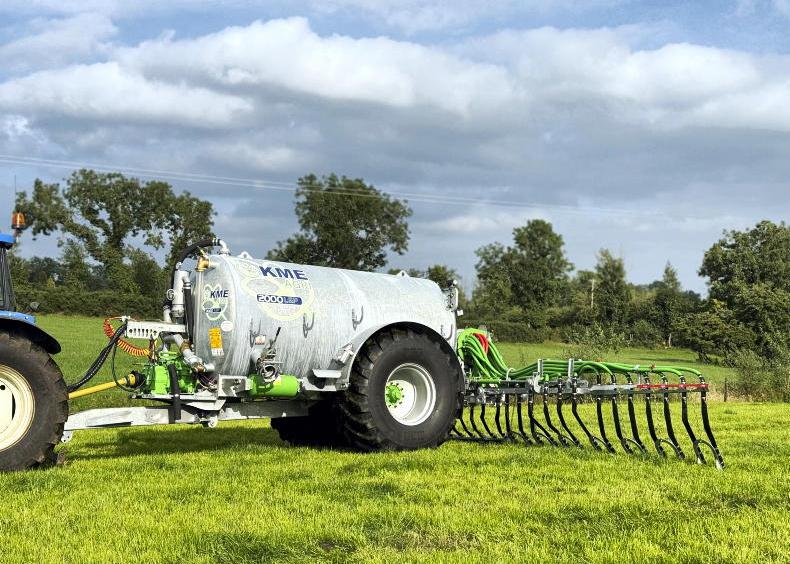The current Targeted Agriculture Modernisation Scheme (TAMS), which is extended to the end of 2022 offers farmers grant aid to buy a GPS-controlled fertiliser spreader for their farm.
The list of machines covered under this scheme was updated in August 2021 and is available in specification S.195A on the Department of Agriculture website.
The fertiliser spreaders covered under the scheme are controlled automatically by a GPS unit. There is a wide range of machines on the market and most companies offer an entry-level spreader and will also have much more advanced spreaders, which can increase the accuracy further and eliminate the number of mechanical adjustments required.
Entry-level GPS control
At the entry level, the GPS-controlled machines allow the fertiliser application rate to be set in the cab by the operator and adjustments are automatically controlled by the machine to compensate for the following:
The flow rate of the fertiliser. The working width.The forward speed of the tractor. Basically, the machine is constantly recalibrating itself and adjusting the shutter openings to ensure that an even spread rate is maintained at all times.
One of the big advantages of these machines is the automatic on/off control at the headland. Most operators turn on their fertiliser spreader much too soon after turning on the headland.
With GPS control, the spreader is turned on at the correct location in the field. The reduction in fertiliser use here gives a considerable saving and it is more of an advantage to farmers with smaller fields. This is because in smaller fields you will meet a headland turn more often. As a result, you will see a bigger benefit.
Although these machines are highly automated, the entry-level GPS machines will normally still require the operator to make some mechanical adjustments. An example of this is the drop point adjustment.
The operator will need to check the settings required for the working width and the fertiliser being used and set the drop point before starting work.
Headland control mechanisms will also need to be operated manually. This can usually be done from the cab. It is important to ensure that the system is engaged for the headland run to prevent fertiliser going into hedgerows or watercourses.
It is also important to remember to turn off the system when the headland is complete.
Some manufacturers can fit a warning system which alerts the driver that the headland system is active. This is a worthwhile option to consider.
Section control
The entry-level spreaders have very basic section control. The machine is reducing the flow rate on one side of the machine when entering a narrow run, which has a limited effect of reducing the working width.
The high-end models can allow for full section control. This is done in a number of ways. Automatic adjustment of the drop point of the fertiliser on to the disc and varying the speed of the discs are typically how these more expensive machines will achieve this.
Some of the machines can even compensate for crosswinds. A wind sensor mounted on the machine constantly checks the direction and speed of wind.
Then the machine will compensate for this by moving the spread pattern to throw the fertiliser with more force into the wind, and less force with the wind. The machine will give a warning to stop spreading when the wind is too strong to allow it to compensate.
GPS control for other machines
You can buy the GPS control system separately to the GPS-ready spreader. You can buy the spreader from one dealer and a GPS controller from another, so shop around. You need both to qualify for the grant.
Make sure both units are compatible with each other. Additional cables may be needed to connect the GPS unit to the spreader. It is a good idea to make sure the GPS unit will allow you control other machines in the future, so it can be used on more than just the fertiliser spreader. Get a unit which is user-friendly and check to see how easy it is to move it from one tractor to another. This will make it easier if you change tractor or driver.
The GPS unit has to be able to record the location and path of fertiliser spreader, and the application rate. It must be possible to upload data from the GPS unit to an external device so a record of the fertiliser application rate and location can be made.
Support
The GPS-controlled fertiliser spreader can be subsidised under TAMS. Depending on the applicant, 40% or 60% funding is available against the cost of the machine.
Qualifying young farmers are eligible for 60% funding with all other qualifying farmers eligible for 40% funding. Mounted machines can have a hopper capacity of 1,000 to 4,500 litres.
The amount available is capped by the Department reference costs and will depend on the type and size of machine which is purchased.
If your spreader is more than this reference cost, you will only get aid up to the reference cost and will have to pay the balance without grant aid.
For full GPS-controlled mounted machines, the reference cost of the spreader will depend on the capacity of the hopper. The formula used to get the reference cost is Y=1.06x+17,600, X is the capacity of the hopper.
So, for a typical setup where someone is thinking of purchasing a 2,000-litre (two-tonne) spreader and a GPS control unit, the total reference cost is calculated as follows: (1.06 x 2,000)+17,600 = €19,720.
Consider a farmer who is thinking of purchasing a GPS-controlled spreader from their local dealer. The spreader will more than likely be more expensive than the Department of Agriculture reference cost. How much more will depend on the specification of the spreader they choose.
The farmer will probably have a spreader that they want to trade in as well and this can be used as part payment.
For a farm looking for a larger trailed fertiliser spreader there is a fixed reference cost – €70,875 for a trailed spreader complete with full GPS. If purchasing a trailed spreader which is GPS ready (for farms with an existing compatible GPS unit) the reference cost figure is reduced by €3,675. Trailed fertiliser spreaders have to have a minimum hopper capacity of 5,500 litres.
If you opt for a bogey mounted fertiliser spreader, this will be classed as a mounted spreader for the grant purpose.
The current Targeted Agriculture Modernisation Scheme (TAMS), which is extended to the end of 2022 offers farmers grant aid to buy a GPS-controlled fertiliser spreader for their farm.
The list of machines covered under this scheme was updated in August 2021 and is available in specification S.195A on the Department of Agriculture website.
The fertiliser spreaders covered under the scheme are controlled automatically by a GPS unit. There is a wide range of machines on the market and most companies offer an entry-level spreader and will also have much more advanced spreaders, which can increase the accuracy further and eliminate the number of mechanical adjustments required.
Entry-level GPS control
At the entry level, the GPS-controlled machines allow the fertiliser application rate to be set in the cab by the operator and adjustments are automatically controlled by the machine to compensate for the following:
The flow rate of the fertiliser. The working width.The forward speed of the tractor. Basically, the machine is constantly recalibrating itself and adjusting the shutter openings to ensure that an even spread rate is maintained at all times.
One of the big advantages of these machines is the automatic on/off control at the headland. Most operators turn on their fertiliser spreader much too soon after turning on the headland.
With GPS control, the spreader is turned on at the correct location in the field. The reduction in fertiliser use here gives a considerable saving and it is more of an advantage to farmers with smaller fields. This is because in smaller fields you will meet a headland turn more often. As a result, you will see a bigger benefit.
Although these machines are highly automated, the entry-level GPS machines will normally still require the operator to make some mechanical adjustments. An example of this is the drop point adjustment.
The operator will need to check the settings required for the working width and the fertiliser being used and set the drop point before starting work.
Headland control mechanisms will also need to be operated manually. This can usually be done from the cab. It is important to ensure that the system is engaged for the headland run to prevent fertiliser going into hedgerows or watercourses.
It is also important to remember to turn off the system when the headland is complete.
Some manufacturers can fit a warning system which alerts the driver that the headland system is active. This is a worthwhile option to consider.
Section control
The entry-level spreaders have very basic section control. The machine is reducing the flow rate on one side of the machine when entering a narrow run, which has a limited effect of reducing the working width.
The high-end models can allow for full section control. This is done in a number of ways. Automatic adjustment of the drop point of the fertiliser on to the disc and varying the speed of the discs are typically how these more expensive machines will achieve this.
Some of the machines can even compensate for crosswinds. A wind sensor mounted on the machine constantly checks the direction and speed of wind.
Then the machine will compensate for this by moving the spread pattern to throw the fertiliser with more force into the wind, and less force with the wind. The machine will give a warning to stop spreading when the wind is too strong to allow it to compensate.
GPS control for other machines
You can buy the GPS control system separately to the GPS-ready spreader. You can buy the spreader from one dealer and a GPS controller from another, so shop around. You need both to qualify for the grant.
Make sure both units are compatible with each other. Additional cables may be needed to connect the GPS unit to the spreader. It is a good idea to make sure the GPS unit will allow you control other machines in the future, so it can be used on more than just the fertiliser spreader. Get a unit which is user-friendly and check to see how easy it is to move it from one tractor to another. This will make it easier if you change tractor or driver.
The GPS unit has to be able to record the location and path of fertiliser spreader, and the application rate. It must be possible to upload data from the GPS unit to an external device so a record of the fertiliser application rate and location can be made.
Support
The GPS-controlled fertiliser spreader can be subsidised under TAMS. Depending on the applicant, 40% or 60% funding is available against the cost of the machine.
Qualifying young farmers are eligible for 60% funding with all other qualifying farmers eligible for 40% funding. Mounted machines can have a hopper capacity of 1,000 to 4,500 litres.
The amount available is capped by the Department reference costs and will depend on the type and size of machine which is purchased.
If your spreader is more than this reference cost, you will only get aid up to the reference cost and will have to pay the balance without grant aid.
For full GPS-controlled mounted machines, the reference cost of the spreader will depend on the capacity of the hopper. The formula used to get the reference cost is Y=1.06x+17,600, X is the capacity of the hopper.
So, for a typical setup where someone is thinking of purchasing a 2,000-litre (two-tonne) spreader and a GPS control unit, the total reference cost is calculated as follows: (1.06 x 2,000)+17,600 = €19,720.
Consider a farmer who is thinking of purchasing a GPS-controlled spreader from their local dealer. The spreader will more than likely be more expensive than the Department of Agriculture reference cost. How much more will depend on the specification of the spreader they choose.
The farmer will probably have a spreader that they want to trade in as well and this can be used as part payment.
For a farm looking for a larger trailed fertiliser spreader there is a fixed reference cost – €70,875 for a trailed spreader complete with full GPS. If purchasing a trailed spreader which is GPS ready (for farms with an existing compatible GPS unit) the reference cost figure is reduced by €3,675. Trailed fertiliser spreaders have to have a minimum hopper capacity of 5,500 litres.
If you opt for a bogey mounted fertiliser spreader, this will be classed as a mounted spreader for the grant purpose.









SHARING OPTIONS